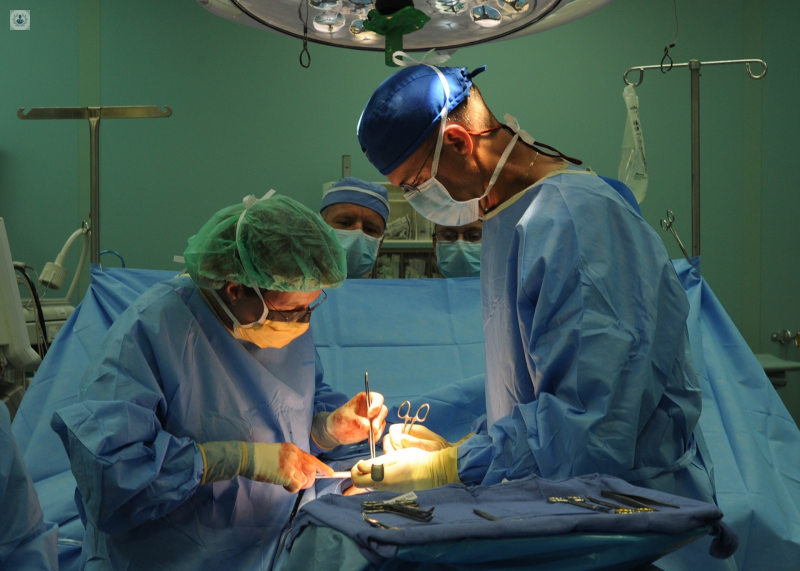Eventration
What is eventration?
Eventration is a hernia (leakage of an organ or adjacent tissues of the cavity where they are contained) that forms at the same time as the scars after abdominal surgery. Eventration is a complication of a laparotomy or abdomen surgery.

What are the symptoms of eventration?
The main symptom of eventration is swelling at a point on the surgical scar. The eventration can be completely asymptomatic: visible without causing any discomfort. However, the most typical symptoms associated with this hernia are abdominal discomfort after exercise or after standing for a long time, after coughing, sneezing, bowel movements, nausea and vomiting. Eventration is more frequent among overweight people, elderly people, who suffer from a chronic cough, constipation, urinary obstruction, and ascites.
What are the causes of the eventration?
Normally, after a laparotomy procedure, the incision in the abdominal wall is stitched up so that it closes correctly. However, when the closure is not carried out correctly, the viscera contained in the abdominal cavity may escape, leading to hernia.
What is the treatment for eventration?
The eventration is treated with a surgical procedure to close that point of the abdominal wall that causes the hernia. For this purpose, there are three different modalities of intervention: application of a metal mesh to contain the hernia, laparoscopic operation to repair the hernia, or "open pit" operation to repair the hernia.
For the first intervention method, when applying a retentive metal mesh, the viscera revert to their original position and a metal mesh is applied at the point of escape to reinforce the abdominal muscle wall.
A laparoscopy, on the other hand, is a non-invasive technique that allows access to the abdominal cavity and the pelvic cavity with much smaller incisions than those performed in laparotomy. In these incisions, the laparoscope is inserted using a tool similar to a straw equipped with a camera connected to an external monitor.
This minimally invasive procedure allows the reallocation of escaped viscera in their original location. The laparotomy operation involves a large incision in the abdomen for the relocation of the intestine and the closure of the abdominal area with stitches. Laparoscopy is the most recommended procedure to eliminate hernias since it allows brief hospitalisation, minimal scars, faster healing and less postoperative pain than in operations performed with laparotomy.
